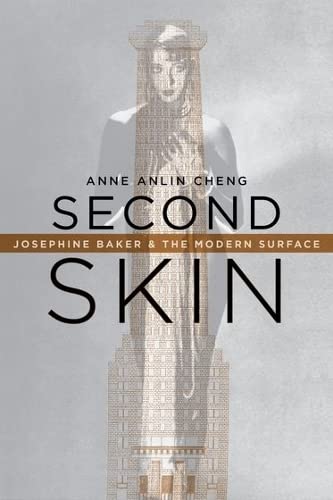
Second Skin. Josephine Baker and the Modern Surface
30,00 €Autor: Anne Anlin Cheng
Editorial Oxford University Press
Fecha y firma en página de respeto. En inglés. / Through the figure of Josephine Baker, Second Skin tells the story of an unexpected yet enduring intimacy between the invention of a modernist style and the theatricalization of black skin at the turn of the twentieth century. Stepping outside of the platitudes surrounding this iconic figure, Anne A. Cheng argues that Baker's famous nakedness must be understood within larger philosophic and aesthetic debates about, and desire for, 'pure surface' that crystallized at the convergence of modern art, architecture, machinery, and philosophy. Through Cheng's analysis, Baker emerges as a central artist whose work engages with and impacts various modes of modernist display such as film, photography, art, and even the modern house. Review This brilliant, provocative, eye-opening work provides a powerful account of racial fetishism and its centrality to the development of Modernist style, thus forwarding a stunning new theory of Modernism in its entirety. ? Sianne Ngai, author of Ugly Feelings In a bravura meditation on the surfaces at the core of Modernism?skin, costume, canvas screen, ornament, pattern?Anne Anlin Cheng tracks the vicissitudes of visual pleasure in the encounter between Europe and its others. La Baker was not simply a lightning rod for exotic stereotypes, Cheng suggests, but instead a 'dynamic fulcrum' whose performances captivated because they staged the crosscurrents that define Modernist style, its dangerous intimacies between primitive and civilized, animal and machine, organic and plastic. ? Brent Hayes Edwards, author of The Practice of Diaspora Anne Cheng's Second Skin offers an innovative, surprising, deeply transdisciplinary archaeology of aesthetic Modernism's relationship to race and its performances. Le Corbusier, Adolf Loos, Picasso, Paul Val rie, and Freud's psychoanalysis become partners in the is dizzying theoretical and historical analysis, where Cheng reveals how buildings, fashion, photographs, paintings, and dances express as well as construct our shared legacy of racial formations. ? Andre Lepecki, author of Exhausting Dance: Performance and the Politics of Movement Opening up an entirely original line of inquiry that connects the architectural surfaces of Adolf Loos and Le Corbusier to the shimmering allure of Josephine Baker's skin, this far-reaching study gives us a unique model of cross-cultural modernity in which psychoanalysis has a major role to play. With wit, verve, and precision, Anne Cheng's insights ensure that our understanding of early Modernism will never be the same and that our notions of phantasy and identification in art, film, and performance will be radically transformed. ? Kobena Mercer, author of Welcome to the Jungle A playful, insanely ambitious text that seeks to rethink standard assumptions about Modernism, race and Josephine Baker in less than 200 pages . . . The book performs the admirable service of making Josephine Baker, the world she inhabited, and the skin that inhabited her seem stranger and more complex than they did before. ? cinespect.com About the Author Anne Anlin Cheng is Professor of English and African American Literature at Princeton University and the author of The Melancholy of Race: Assimilation, Psychoanalysis, and Hidden Grief.
